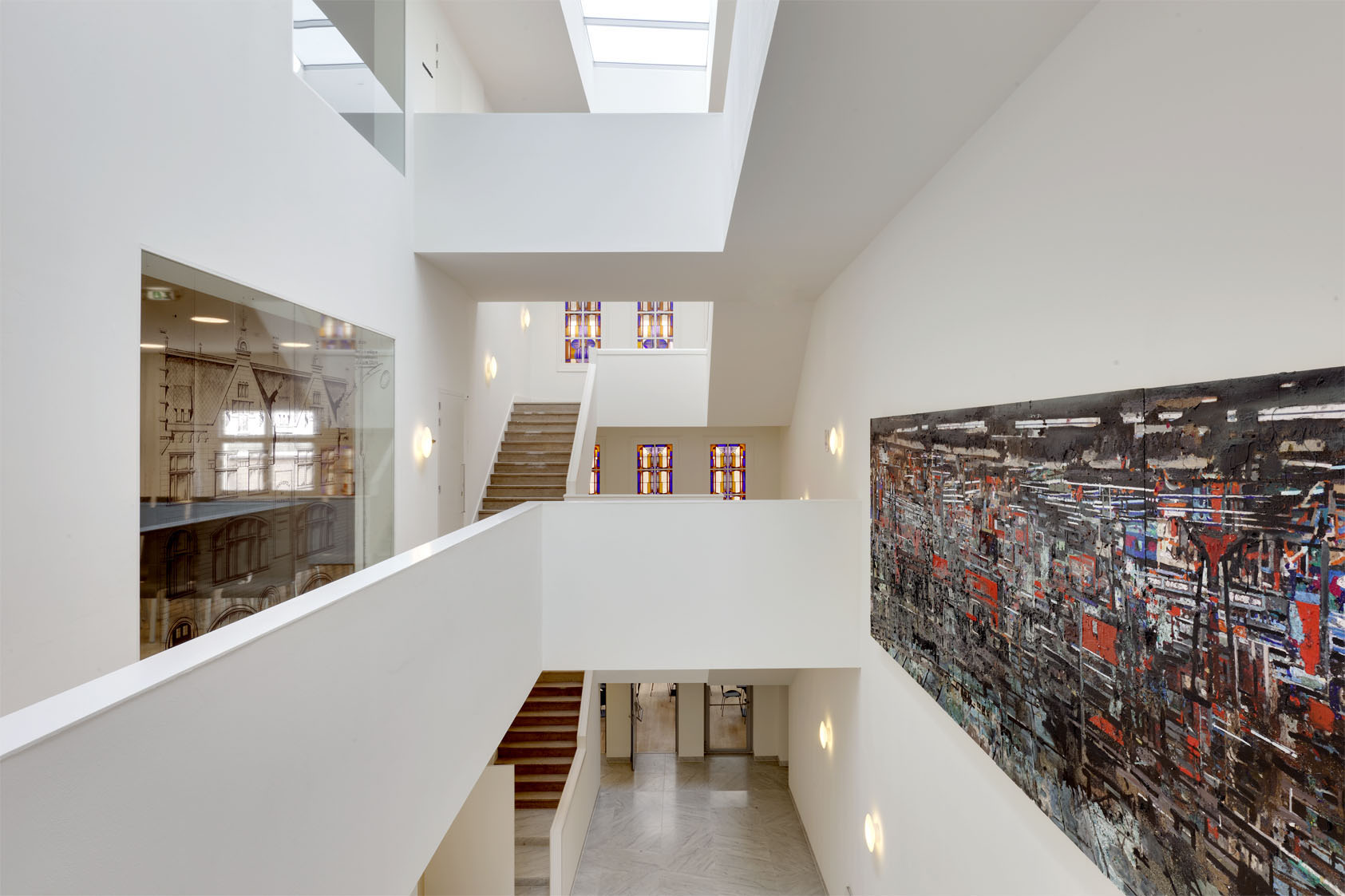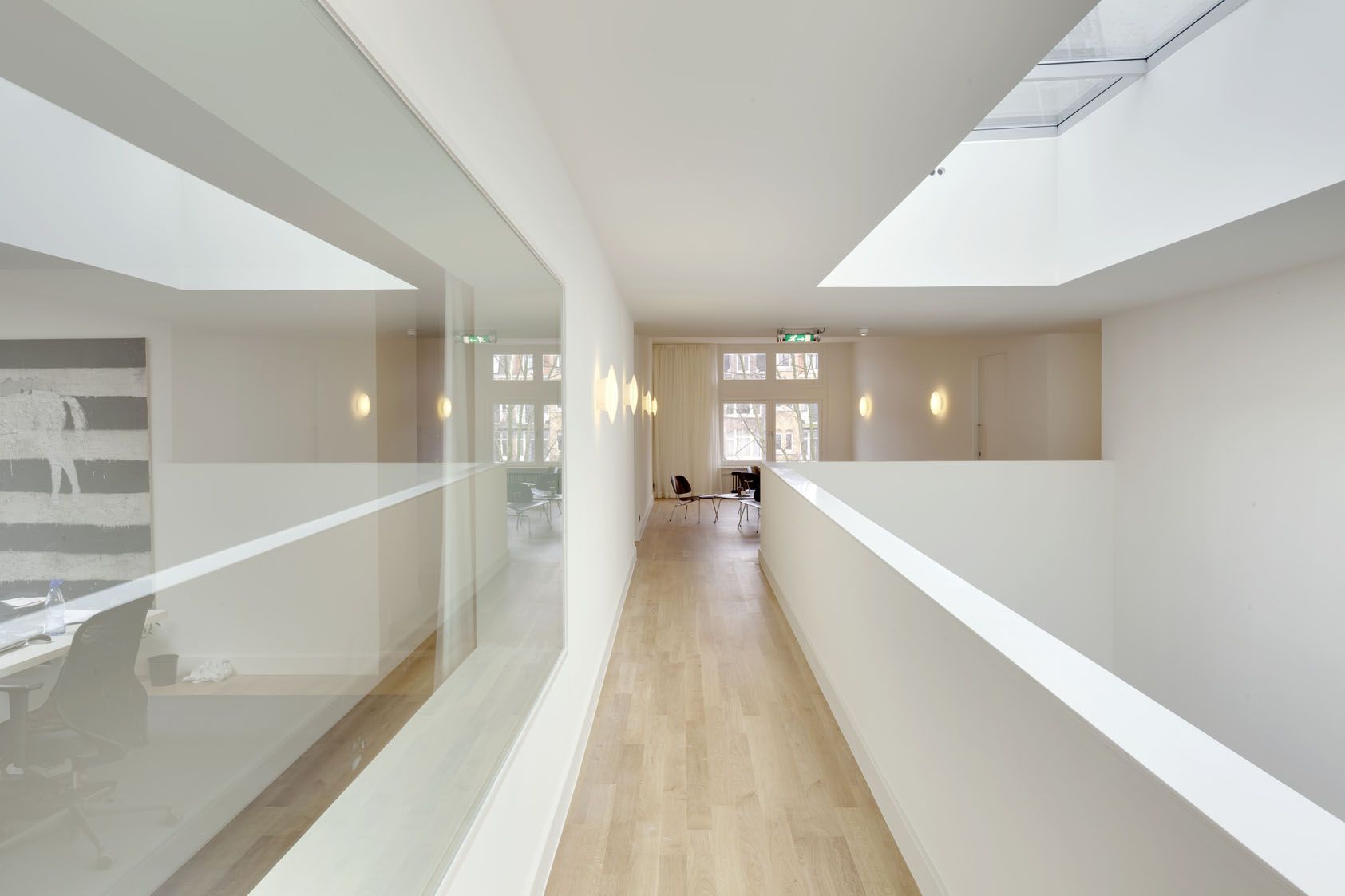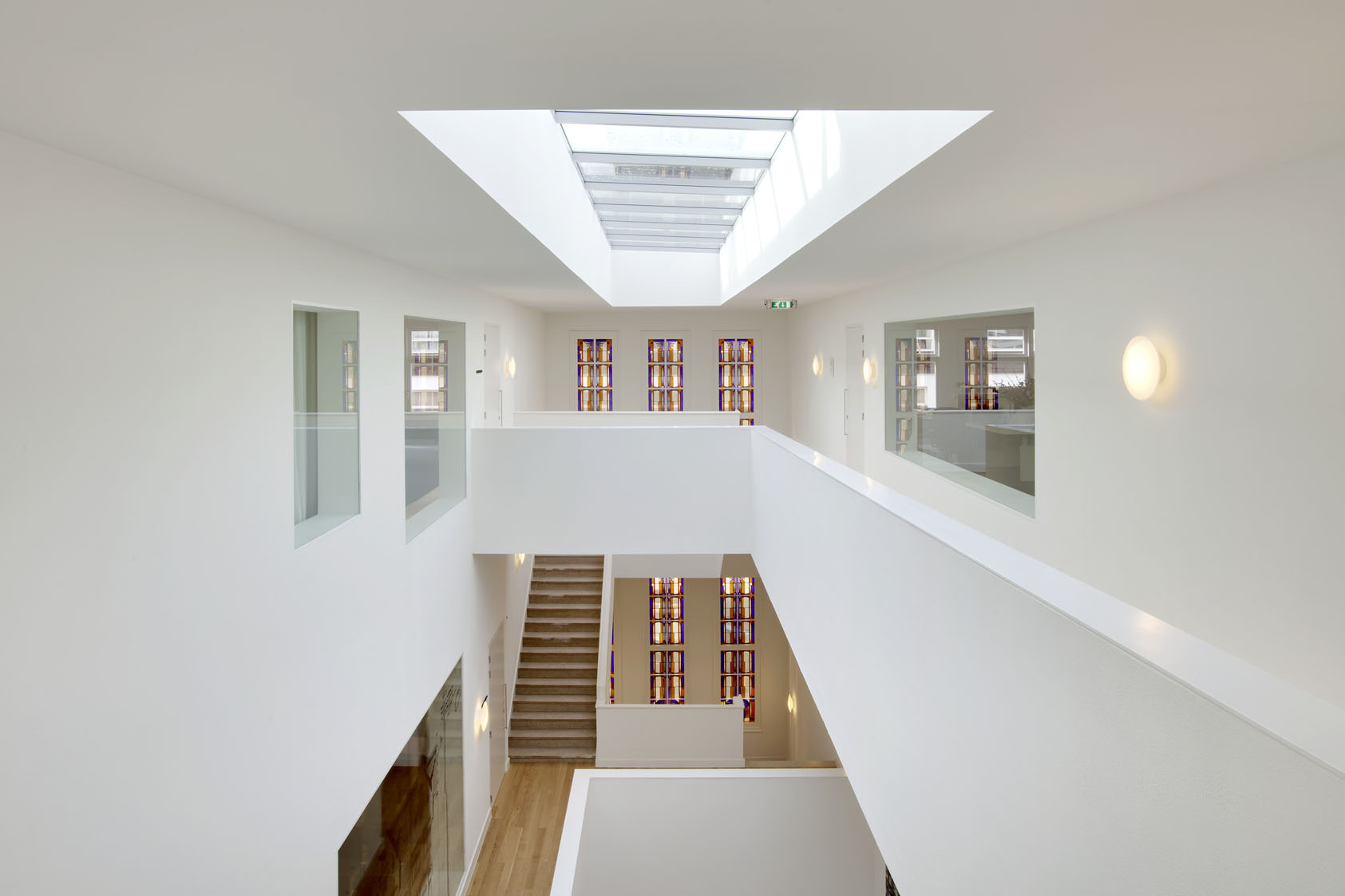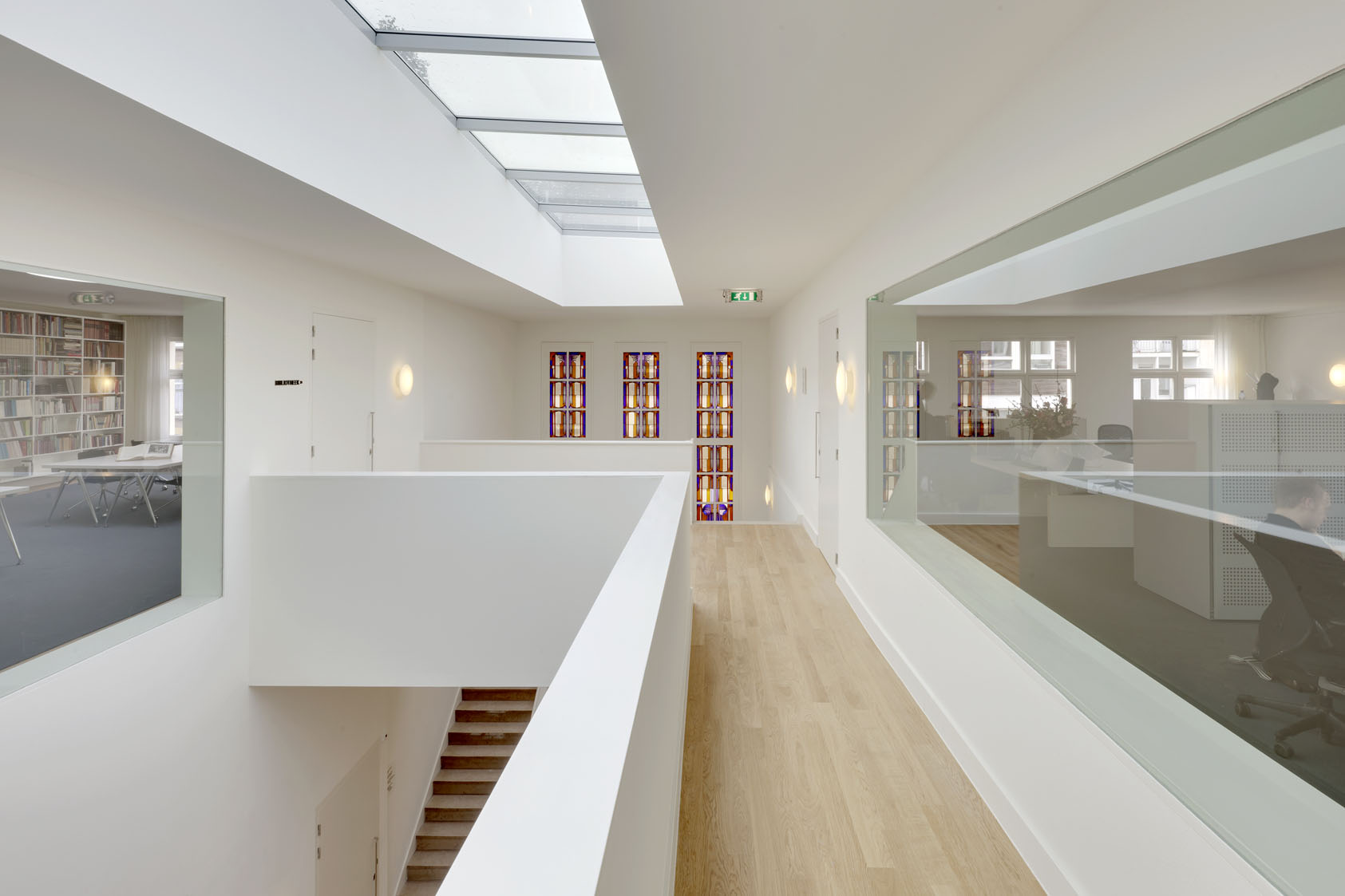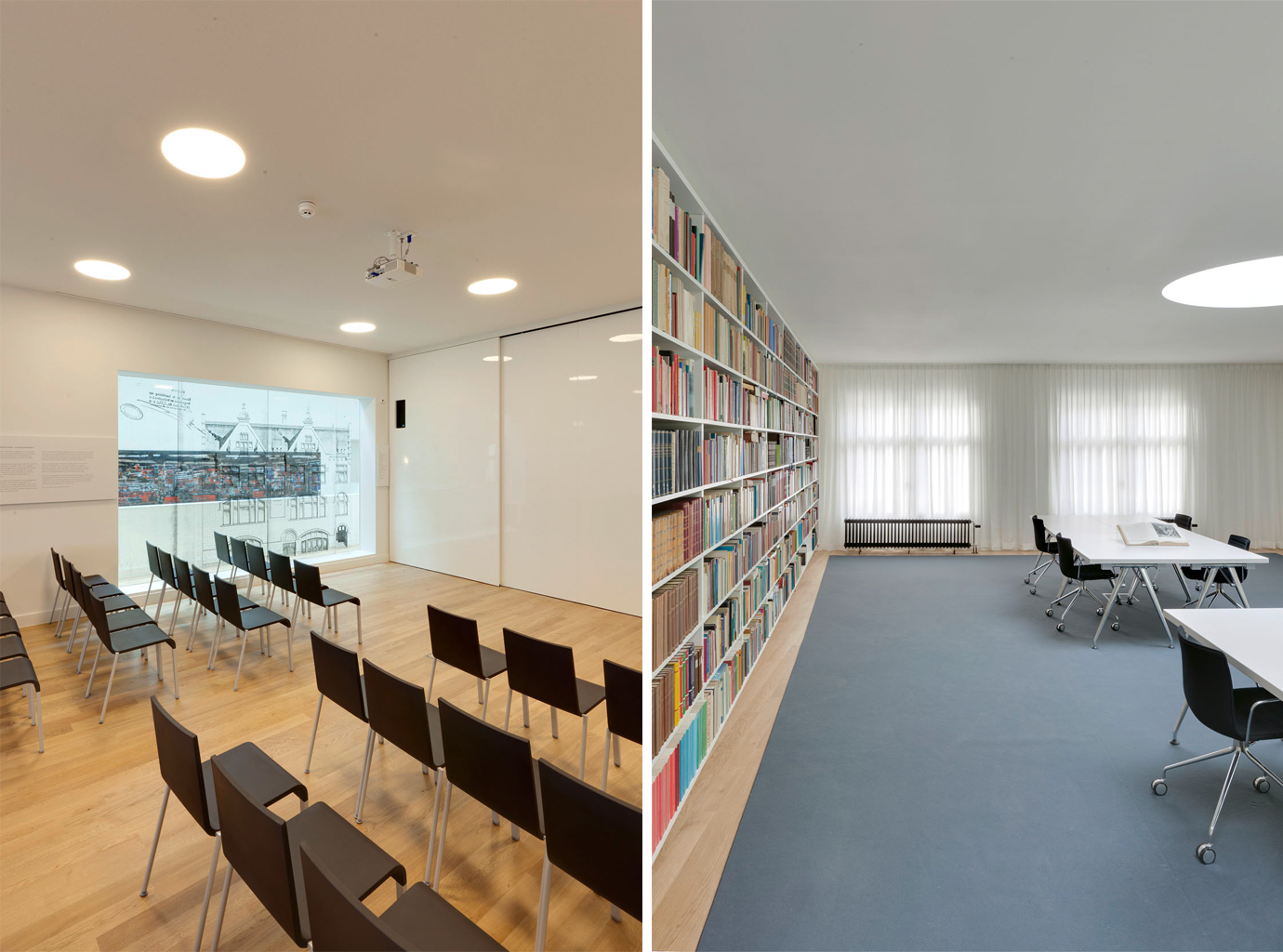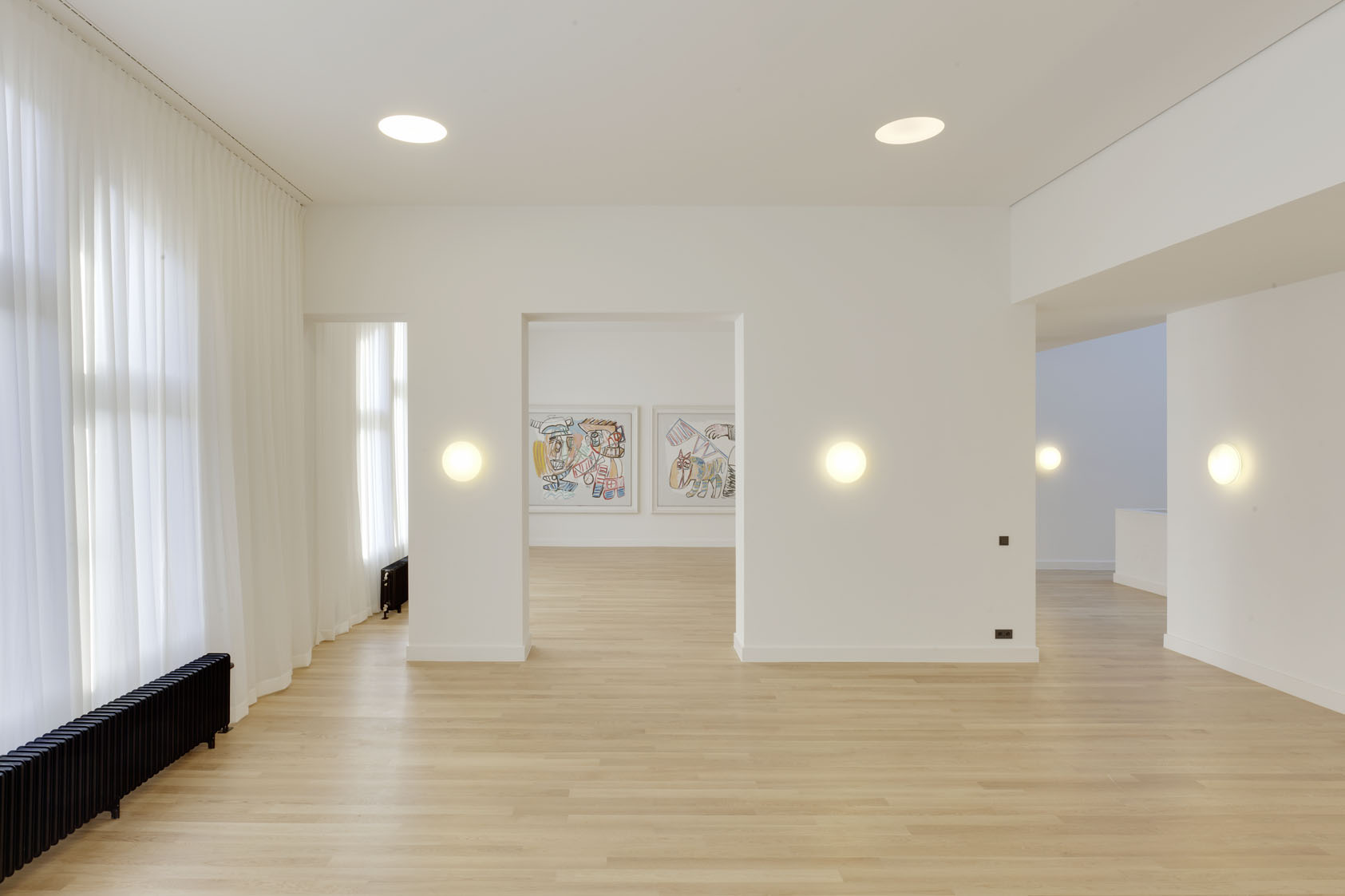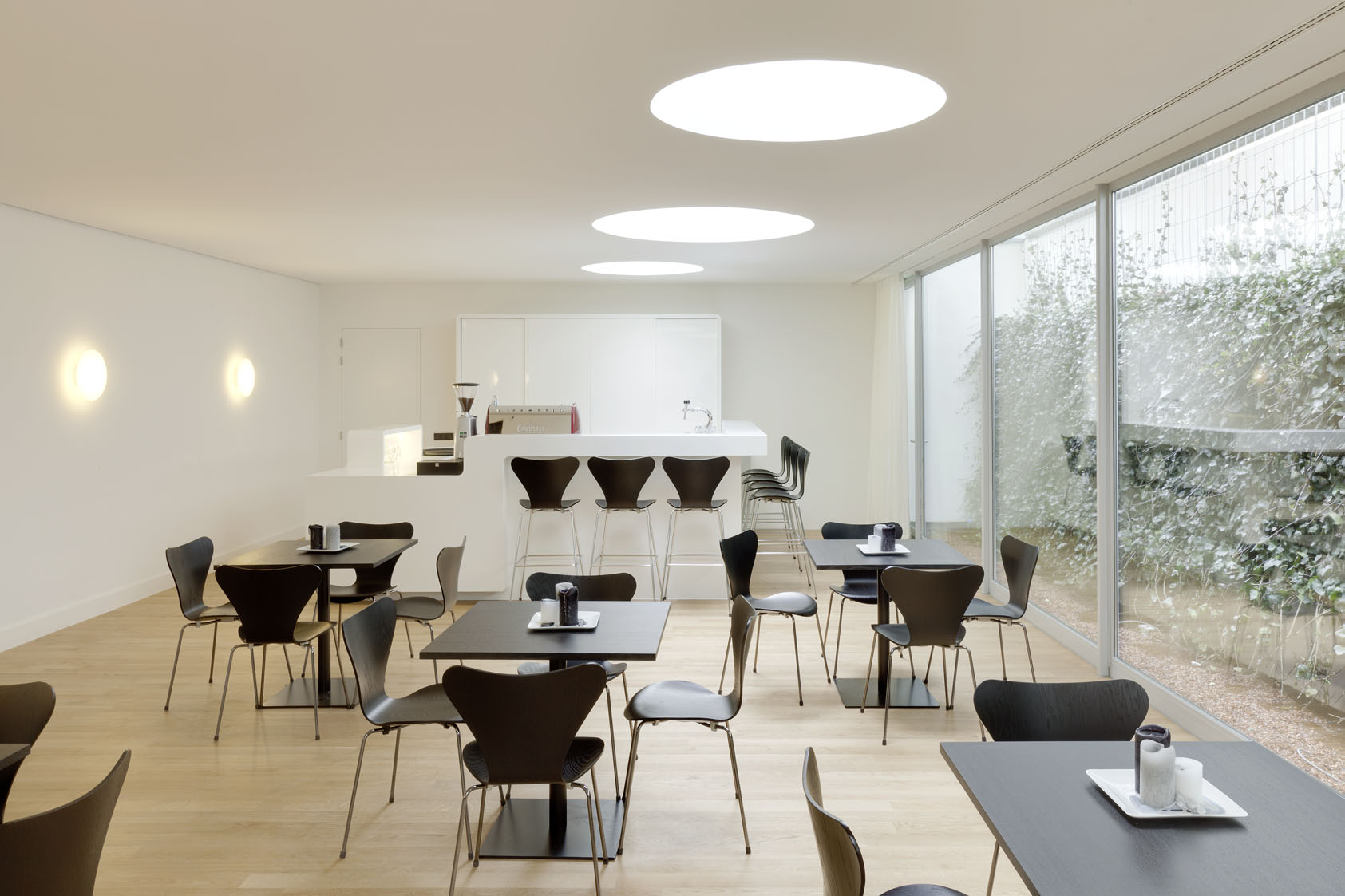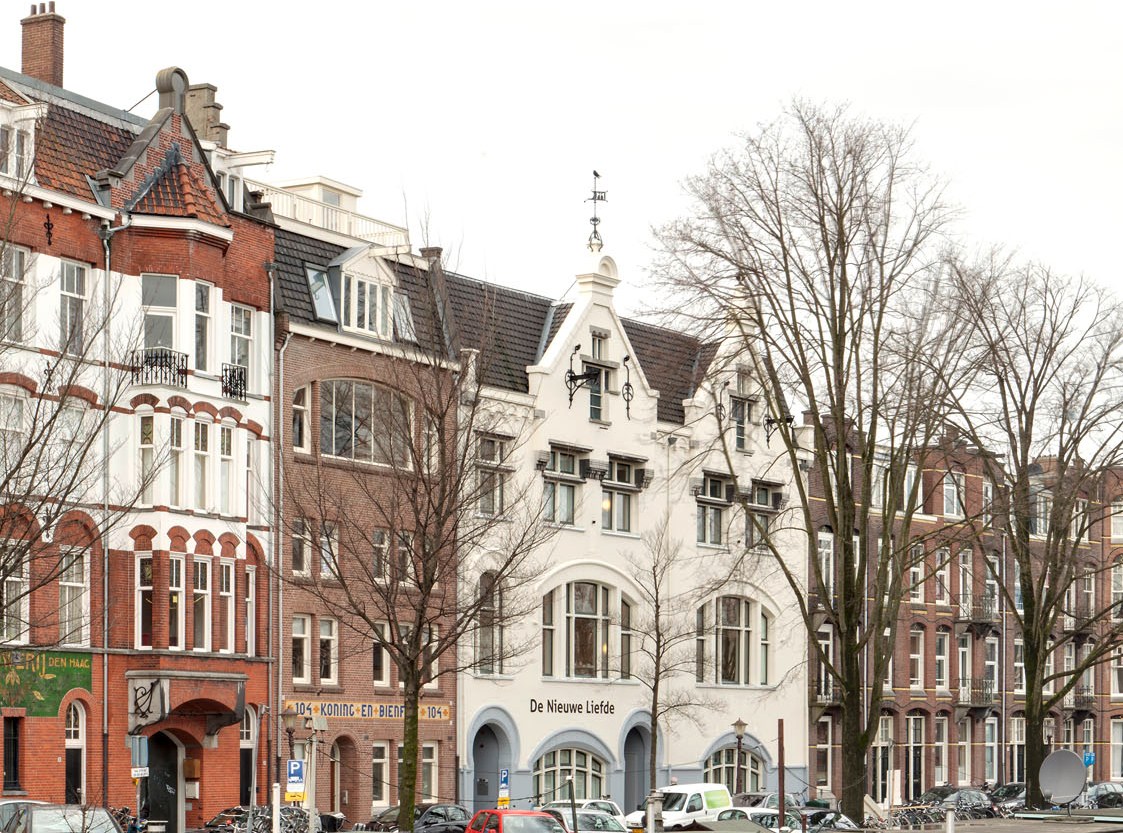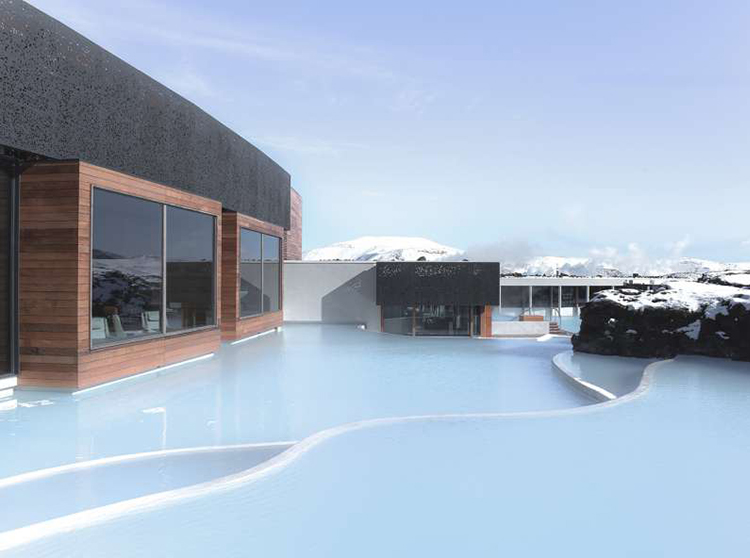The monumental white building on Amsterdam’s Da Costakade was originally constructed in 1901 as a storage space for a wine company, before being converted into a parish in 1932 named De Liefde (‘The Love’). After falling into disrepair after many renovations, and with the last tenants leaving the property in 2007, the complex was completely rebuilt by Wiel Arets Architects and renames ‘De Nieuwe Liefde (‘The New Love’). The reconstruction included transforming the existing complex of buildings into a theatre and community centre composed of a main hall with seating for 230, a conference room with space for 60, a choir space for 50, a library, a grand foyer and a restaurant-café.
The building retains many of its original eclectic Neo-Renaissance and Art Nouveau features, setting it apart from its immediate surroundings. by a depth of between 25 and 30 meters, reflecting its original use as a space for wine storage. Throughout the 20th century the various tenants had all left their mark on the building: rooms were small and oddly divided with few receiving natural light, multiple staircases were needed to traverse the building,
The biggest challenge was to transform a dark and narrow staircase into a grand entry foyer that connects to the main circulation core. The original core received no natural light, thus requiring a long skylight to be created in combination with the circulation core, introducing daylight throughout the entire complex and visually connecting the most important spaces to one another across multiple levels. Additional visual connections to the outside were created in the café where large skylights enliven an otherwise enclosed space.
Project Team : Wiel Arets, Bettina Kraus, Gwendolyn Kerschbaumer, Julius Klatte, Dennis Villanueva, Marie Morin
Collaborators : Bas van der Pol, Natali Gagro
Photographs : Jan Bitter, Sjaak Henselmans
Client : Amerborgh Monumenten BV
Program : Theatre/Community Center
Consultants : Zonneveld (construction); WRI (installations & building physics)
